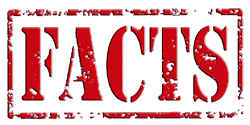Why are golf balls white?

Exploring the Significance of White Golf Balls: A Detailed Insight
Over the course of its evolution, the color of golf balls has sparked intrigue and discussion within the golfing community. While today’s market offers an array of colors, white continues to dominate. Let’s delve into the multitude of reasons behind this prevalent choice and uncover the historical underpinnings that have shaped the golfing landscape.
Enhanced Visibility
White golf balls boast unparalleled visibility against the verdant backdrop of golf courses. Their stark contrast against the lush greens facilitates quick detection by golfers, especially from afar. This heightened visibility is indispensable for tracking shot trajectories and swiftly locating balls, crucial elements for maintaining a steady pace of play.
An Emblem of Tradition
Delving into the annals of golfing history, we find that the genesis of white golf balls lies in the materials of yore. In the bygone era, golf balls fashioned from wood and leather exuded a natural whitish hue. As golfing technology progressed and synthetic materials like rubber and resin emerged, the tradition of white golf balls persisted, blending homage to the past with the advancements of the present.
A Visual Oasis
Picture a sun-drenched day on the golf course, with azure skies stretching overhead. Here, white golf balls emerge as beacons of clarity, cutting through the vast expanse with their luminous presence. This visual clarity aids golfers in effortlessly discerning the position of their balls against the backdrop of the heavens, contributing to an immersive golfing experience.
Televised Triumph
The ubiquity of white golf balls extends beyond the greens, transcending into the realm of televised tournaments. With their inherent visibility, white balls captivate audiences, ensuring seamless tracking of the game’s progression. Whether broadcasted in high definition or traditional formats, white golf balls shine brightly, facilitating an engaging viewing experience for golf enthusiasts worldwide.
Psychological Precision
In the psyche of golfers, the color white embodies notions of purity and precision. The immaculate facade of white golf balls instills a sense of confidence, empowering players to execute their shots with unwavering focus. This psychological association underscores the enduring allure of white golf balls on the course.
Expanding on Historical Insights

- Early Materials
Golf’s nascent stages saw balls crafted from wood, leather, and even feathers, imbuing them with natural hues reminiscent of white.
- Handcrafted Heritage
Artisans meticulously painted early golf balls white, aligning with the imperative of visibility amidst the sprawling greens.
- The Synthetic Saga
The advent of synthetic materials in the 19th century heralded a new era of durability and consistency, yet white remained the color of choice, paying homage to tradition while embracing innovation.
- Dimple Dynamics
The 20th century witnessed a revolutionary stride with the introduction of dimples, enhancing the aerodynamics and visibility of white golf balls, thus cementing their status as the standard bearer of the sport.
- Modern Manifestation
White golf balls, though steeped in tradition, have evolved alongside the game, adapting to modern preferences while retaining their timeless appeal.
The legacy of white golf balls transcends mere aesthetics, intertwining with the very fabric of golfing tradition and innovation. From the hallowed grounds of historic courses to the dazzling screens of televised tournaments, white golf balls stand as enduring symbols of the sport’s rich heritage and vibrant evolution.












